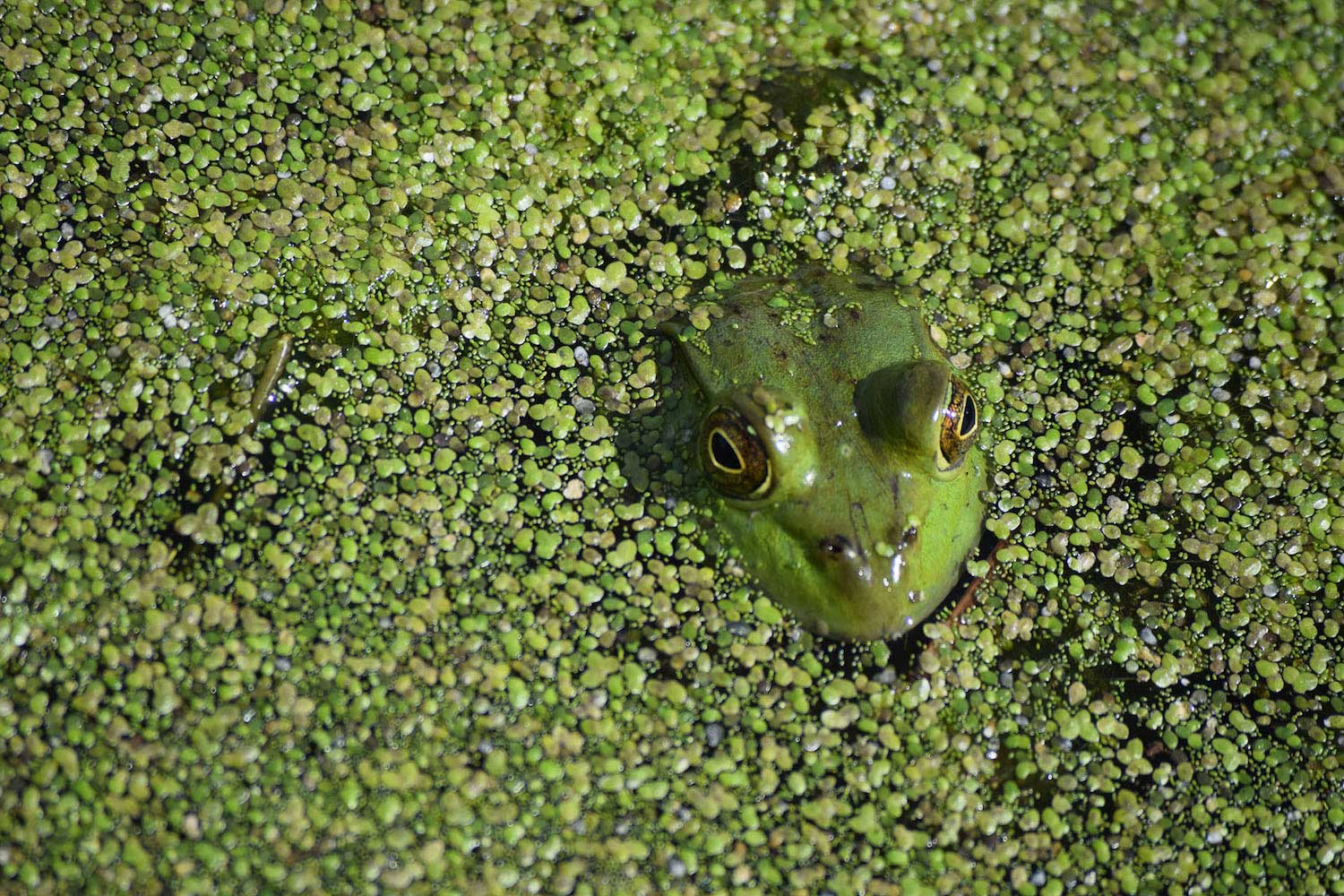Duckweed is world's smallest flowering plant

At quick glance, many of our local waterways look like they are covered in a layer of algae or slime by the time summer rolls around each year, but if you look closer you'll see it's not algae at all. It's actually a layer of duckweed — a teeny, tiny plant that makes it presence known each year in slow-moving and still bodies of water.
Duckweed is actually a group of plants belonging to the Lemna genus, according to the U.S. Forest Service. There are more than 30 species in all, and nine grow in North America. The most common and widespread of all duckweed species is common duckweed, or Lemna minor. Common duckweed grows across almost the entire United States, reported in every state except Hawaii and South Carolina.
Take a close look at any body of water coated with a layer of duckweed. Each of those minuscule specks of green is an individual plant. These plants are the smallest known flowering plants on Earth, with each consisting of a single oval leaf that's no more than a quarter-inch long, the forest service reports. So when you see a layer of duckweed coating the water's surface, it's really a collection of thousands if not millions of duckweed plants.
These plants don't have stems and leaves, but they have a leaf-like structure called a thallus. The thallus contains chlorophyll, so it's able to undergo photosynthesis to create energy. If you're very lucky, you might catch of glimpse of duckweed's tiny white flowers, but they are so small they are hard to see, plus the plant only rarely blooms, according to the National Park Service.
Instead of reproducing by flowering and spreading seed, duckweed usually undergoes asexual reproduction through budding. They can do this by forming new stems from their vegetative buds or by producing a specialized bud called a turion, the forest service reports. When a turion is formed, it breaks off from the stem of its parent plant and sinks to the bottom of the body of water where it lives. It will overwinter there, and then, in the spring, as temperatures warm, it will metabolize its starches. This creates a gas bubble that allows it to float up to surface level and grow into a new duckweed plant.
While a coating of duckweed on the water's surface may seem unsightly, all those tiny plants are an important food source for many animals that live in and around the water. It should come as no surprise that ducks and other waterfowl often eat these tiny plants, but frogs, turtles and other aquatic creatures also eat it, according to the park service. It's also been proposed as a human food source because it's high in protein when dried.
In addition to being an important food source in aquatic environments, duckweed is also used as shelter or camouflage for reptiles and amphibians hiding from predators, plus aquatic insects like dragonflies and damselflies often lay their eggs on duckweed, the National Park Service reports. Duckweed is also being used in research for biomedical applications, and it's been used in bioremediation of waterways with high levels of nitrogen and phosphorus, usually as a result of runoff from agricultural land.
Although duckweed is beneficial, it can become a nuisance in some waterways when it reproduces too quickly, according to the forest service. Although the abundant supply is a good food source, it can block light from entering the water, which can upset the balance of the ecosystem.
